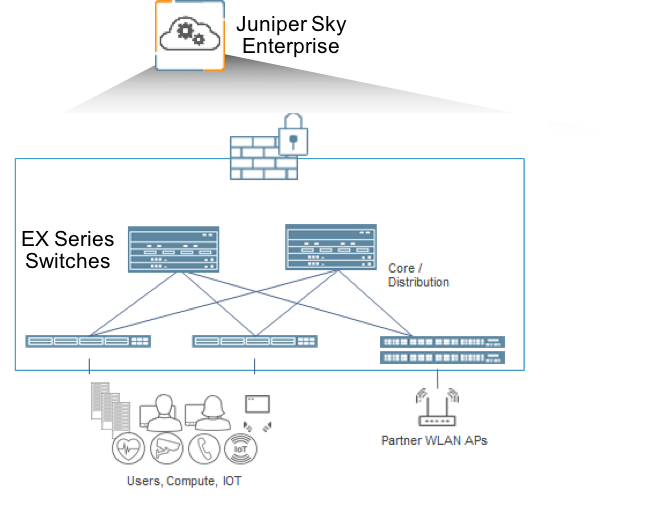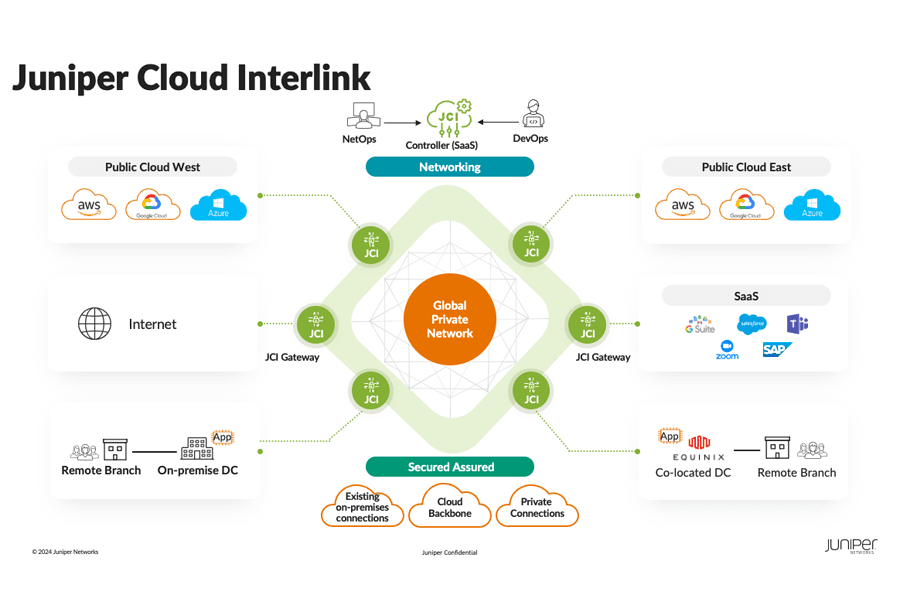When the discussion of cloud or multicloud comes up in our industry, the conversation almost invariably defaults to data centers. Whether it’s the move to data center fabrics or the role of disaggregation or the market-wide interest in automation and DevOps, all roads seem to point to the place-in-network (PIN) at the center of both public and private cloud.
But there’s a problem with this dynamic. The dialogue around multicloud is incomplete when it starts and stops at the boundaries of the data center. In fact, the entire promise of cloud is only partially realized unless the core principles are extended to where the users are.
Any multicloud strategy that fails to not just include but feature both the campus and branch PINs is merely a story—a fantasy really — designed primarily to entice without having to deliver.
Is campus really a part of a multicloud architecture?
The central tenets of multicloud are:
- Security—Security must be uniformly enforced end-to-end across all PINs in a multicloud environment.
- Ubiquity—Services must be ubiquitously available, regardless of where the user or application are and how they are being accessed.
- Reliability—Everything has to be available all the time.
- Fungibility—Applications and users can be anywhere, which requires that resources be interchangeable.
These principles further place the campus into the scope for a true multicloud experience. Indeed, how a user accesses cloud resources is a critical part of the end-to-end experience, which requires the campus to be integrated into multicloud security and operational frameworks in the same way that any data center would be.
Why is campus excluded from most multicloud discussions?
So if the cloud on-ramp is part of the end-to-end story, and security and operations have to span the entire path from user to workload, why is it that the campus is rarely talked about when the topics of cloud and multicloud arise?
Part of the reason could be that the campus has not gone through the same transformative changes that the data center has experienced. Most enterprises are slow to upgrade the campus, where connectivity is the primary objective. And thus, the campus hasn’t been virtualized to the extent of, or as fast as, the data center. Of course, with wired connections being replaced by wireless options in the campus, it would seem that the campus is going to see a bit of an innovation growth spurt. Minimally, technologies like CBRS and LTE are going to accelerate change. And insofar as wireless solutions more prominently feature controller-based management, that change will undoubtedly bleed into the wired side as well, especially as security policies have to be reconciled across more devices accessing more applications.
More cynical audiences might also conclude that with only a few vendors having end-to-end reach from data center to campus, the amount of campus chatter in a noisy marketplace is simply diluted by a data center story that is easier to tell. For most, it’s fairly convenient to ignore the campus.
Juniper Networks believes the campus should be multicloud-ready
Juniper’s point of view here is clear: any multicloud strategy must extend all the way to the campus and branch. It’s with that foundational premise in mind that Juniper is expanding its campus portfolio to help enable enterprises move from where they are, toward a multicloud future. In the campus, Juniper features these platforms:
- EX9250—This evolved, compact core switch comes in 1RU and 3RU sizes. The smaller 1RU form factor has a shallow depth to allow for installation in any wiring closet environment, while the 3RU version allows for expansion, as needed. The EX9250 supports both 802.1br and EVPN, giving enterprises multiple fabric management options.
- EX2300—This entry-level multi-gig switch has up to 16 ports for 1GbE and 2.5GbE connectivity.
- EX4300—This larger-size multi-gig switch supports up to 24 ports for 1GbE, 2.5GbE, 5GbE, and 10GbE access. It features industry-leading PoE up to 95W. And it supports MACsec on all ports to provide a secure on-ramp to the cloud.
In its pursuit of a simplified campus experience, Juniper is also delivering management support:
- Juniper Sky Enterprise—This cloud management tool allows customers to manage the campus from a single point of control. With a subscription model, Juniper Sky Enterprise provides policy control over both switches and firewalls, along with integration into wireless access points, for a seamless campus management experience.

Juniper’s entire campus portfolio runs Junos software. This means that Juniper can extend its industry-leading telemetry and automation capabilities from the cloud to the campus. The ability to leverage streaming telemetry, programmatic interfaces and standard integrations with common operations tools (from Ansible to Splunk, and everything in between) means that enterprises can eliminate the hard boundary between what typically exists between the cloud (private or public) and the user (campus or branch).
Migrating to multicloud
The move to multicloud will not be done in a single step. There is no single product that encompasses everything necessary for a full multicloud environment. And if there were, enterprises would need to adapt their tools, processes and people to fit the new security and operational models required to manage it.
The simple path to a secure and automated multicloud will start with normal refreshes and expansions. As a normal manner of business, enterprises should make sure that each step they take is a step forward. Each architectural shift, purchase or operational enhancement should make multicloud more accessible. And above all else, enterprises should not do anything that reduces options or precludes them from pursuing a multicloud strategy at some point in the future.
Where PINs can be treated like isolated islands in a pre-cloud architecture, multicloud demands that security and automation traverse the end-to-end network. By extending policy and operational control across all of the multicloud components, Juniper is helping enterprises build campuses that are multicloud-ready.
*For more info on how Campus plays a key part in multicloud, read Juniper’s CTO, Bikash Koley’s blog: Crossing Tax: Multiplying Complexity in Multicloud *


